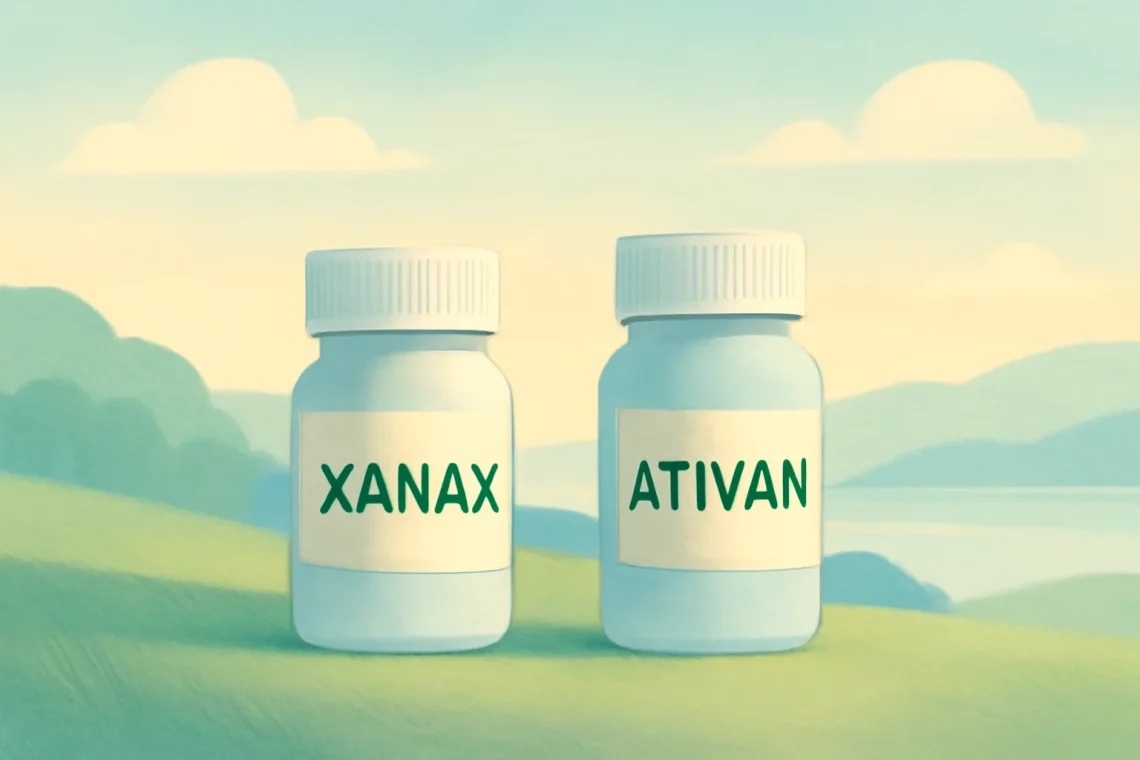
Xanax vs Ativan: Understanding the Differences and Uses
Xanax and Ativan are both medications commonly prescribed to manage anxiety and other related disorders. They belong to a class of drugs known as benzodiazepines, which are often utilized for their sedative and calming effects. While they may serve similar purposes, these medications differ in their chemical composition, usage, and side effects. Understanding the distinctions between Xanax and Ativan is crucial for patients and healthcare providers alike, as it can impact treatment decisions and overall patient outcomes. As anxiety disorders continue to affect a significant portion of the population, the choice between these two medications can be a pivotal one.
In this article, we will explore the fundamental differences and similarities between Xanax and Ativan, helping individuals make informed decisions regarding their treatment options. By examining their mechanisms of action, potential side effects, and appropriate uses, we aim to provide a comprehensive overview that aids in understanding these medications better.
Xanax: An Overview
Xanax, generically known as alprazolam, is one of the most widely prescribed benzodiazepines in the United States. It is primarily used to treat generalized anxiety disorder (GAD) and panic disorder. Xanax works by enhancing the effects of a neurotransmitter called gamma-aminobutyric acid (GABA) in the brain, which helps to produce a calming effect on the nervous system.
The onset of action for Xanax is relatively quick, with effects typically felt within 30 minutes to an hour after ingestion. This rapid onset makes it a popular choice for individuals experiencing acute anxiety or panic attacks. However, this quick action can also lead to a higher potential for dependence and withdrawal symptoms, particularly if the medication is used for an extended period or in higher doses.
Dosage for Xanax varies depending on the individual’s condition, age, and response to treatment. It is usually prescribed in low doses initially, which may be gradually increased based on the patient’s needs. Common side effects of Xanax include drowsiness, fatigue, dizziness, and dry mouth. In some cases, individuals may experience more severe side effects, such as memory issues or mood changes.
One of the critical considerations when using Xanax is its potential for abuse. Due to its efficacy in inducing relaxation and alleviating anxiety, there is a risk that individuals may misuse the medication, leading to dependence or addiction. Therefore, it is essential for healthcare providers to monitor patients closely and provide guidance on the appropriate use of this medication.
In summary, Xanax is a potent medication for anxiety and panic disorders, known for its rapid onset of action. While it can be highly effective, it also carries risks that must be acknowledged and managed carefully.
Ativan: An Overview
Ativan, or lorazepam, is another widely prescribed benzodiazepine that is often used to manage anxiety disorders, insomnia, and seizure disorders. Like Xanax, Ativan works by enhancing the effects of GABA, which results in a calming effect on the central nervous system. However, it has a slightly different pharmacological profile and duration of action.
Ativan is typically prescribed for longer periods than Xanax, as it has a slower onset of action and a longer half-life. This means that while it may take longer to feel its effects—often between one to two hours—it can provide more prolonged relief from anxiety symptoms. This characteristic makes Ativan a suitable option for individuals who require ongoing management of their anxiety, as it can help stabilize mood and reduce anxiety levels over an extended period.
Dosage for Ativan also varies based on individual needs and conditions, with adjustments made as necessary. Common side effects associated with Ativan include sedation, dizziness, weakness, and, in some cases, confusion. It is essential for patients to be aware of these potential side effects, especially if they are operating machinery or driving.
While Ativan is generally considered to have a lower potential for abuse compared to Xanax, it is still a controlled substance that requires careful monitoring. Patients should follow their healthcare provider’s instructions regarding dosage and duration of use to minimize the risk of developing dependence or experiencing withdrawal symptoms.
In conclusion, Ativan serves as an effective treatment for anxiety and related disorders, offering a longer-lasting solution compared to Xanax. Its unique properties make it an appropriate choice for patients in need of sustained anxiety management.
Comparative Analysis: Xanax vs. Ativan
When comparing Xanax and Ativan, several factors should be taken into account, including their pharmacokinetics, therapeutic uses, and potential side effects. Both medications belong to the benzodiazepine class but exhibit distinct characteristics that may influence a healthcare provider’s choice for a patient.
One significant difference lies in the onset of action. Xanax is known for its rapid effects, making it ideal for individuals experiencing acute anxiety or panic attacks. In contrast, Ativan has a delayed onset and is better suited for those requiring long-term anxiety management. This distinction can be crucial for patients based on their specific anxiety triggers and treatment goals.
Another aspect to consider is the risk of dependence. While both medications can lead to dependence with prolonged use, Xanax’s rapid onset and shorter half-life may contribute to a higher potential for misuse. Patients on Xanax should be closely monitored for signs of dependence or withdrawal, particularly if they have a history of substance abuse. Ativan, with its longer duration of action, may offer a more stable option for some individuals, reducing the likelihood of dependency.
The side effects of both medications are also noteworthy. While common side effects such as drowsiness and dizziness are reported with both drugs, individual responses can vary. Some patients may find that they tolerate one medication better than the other, which can influence their overall treatment experience. It is essential for patients to communicate openly with their healthcare providers about their experiences with either medication.
Lastly, the choice between Xanax and Ativan may also depend on individual patient factors, including other medications being taken, underlying health conditions, and personal preferences. A thorough assessment by a healthcare provider can help determine the most appropriate treatment option, ensuring that the patient’s needs are met effectively.
In summary, while Xanax and Ativan share similarities as benzodiazepines, their differences in onset, duration, and risk of dependence make it crucial for patients to work closely with their healthcare providers to find the best fit for their treatment needs.
Conclusion: Making an Informed Choice
In conclusion, both Xanax and Ativan are effective medications for managing anxiety and related disorders, but they come with distinct properties that can significantly affect a patient’s treatment experience. Understanding the differences between these two medications is essential for making an informed choice about one’s mental health treatment.
Patients should consider their specific symptoms, treatment duration, and any potential risks associated with the medications. It is crucial to engage in open discussions with healthcare providers, who can provide personalized recommendations based on individual health profiles and treatment goals.
Ultimately, the decision to use Xanax or Ativan should be made collaboratively between the patient and their healthcare provider, ensuring that the chosen medication aligns with the patient’s needs and lifestyle. Monitoring and regular follow-ups are essential to adjust treatment as necessary and to address any emerging concerns.
**Disclaimer:** This article is for informational purposes only and does not constitute medical advice. Always consult a healthcare professional for medical concerns or treatment options.




